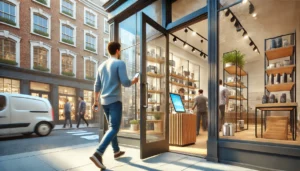Just before the COVID-19 pandemic turned everything on its side, QR codes were dying a quiet and painless death. This puzzle-looking barcode technology has been around for more than 2 decades, in fact. The marketing industry got really excited about its potential about 10 years ago, but it was never publicly adopted until the physical distancing and contactless health requirements were put in place around the world.
Today, almost everyone with a smartphone knows how to scan a QR code to view restaurant menus, find a product online, download manuals and much, much more.
What are QR Codes, anyway?
QR (Quick Response) Codes can be read and understood by mobile devices. Marketers have used this in billboards, magazines, web pages, and any other marketing material. QR codes can provide more information about the product or service without breaking a sweat, and the information quickly goes to the user’s device.
Basically, QR codes promote interaction and engagement through the mobile phone. This type of marketing strategy enables businesses to transfer information to the user. Nowadays, users are done with anything that’s slow and time-consuming. It’s all about being instant and fast, especially in the world of marketing.
How can you use QR codes in your business?
The great thing about QR codes is that you can finally measure your online and traditional advertising effectiveness by counting how many times a viewer scans your codes! Imagine knowing exactly how effective your print ad in a local paper is compared to an ad in your industry magazine, and measuring exactly how many new customers came into your business as a result of each?
Below are some ways you can maximize QR codes to monitor the performance of your marketing campaign properly:
1. Direct customers to a landing page/website
Scanning a QR code can lead to a signup page or any landing page/website. This removes the hassle of going through the process of accessing the website and navigating your way around the page.
Make sure that you use a unique URL matched with your QR code to measure it accurately.
2. Dial your business number
In business conferences, you’ll surely engage and interact with a crowd. If you use QR codes for your booth or station, then interested business partners can just scan the code and receive your business details such as your business contact number. Sometimes, you can even tweak the QR code to dial the number on the receiver’s phone directly.
3. Send a message
This is exciting because the user will only receive the message once the QR code has been scanned. Sending messages through QR codes benefits SMS marketing the most. It can be used for sales, user support, on-request product upgrades, and opt-in SMS registration.
4. Send an email
Much like sending messages, QR codes for sending emails will help you read and monitor data for newsletters, email marketing, and your email’s performance rates (e.g. open and bounce rates).
Aside from that, the user can also continue reading the said the email on his mobile phone by scanning the QR code. In this manner, your email will be accessible on any platform.
5. Download apps
Once you’ve scanned the QR code, it will direct you to the download page of the app and start the download. Businesses have used their creativity to make their QR codes eye-catching. Popular apps such as Angry Birds have used QR codes for their marketing campaign.
Furthermore, apps themselves sometimes use QR code to foster engagement inside their community. Social media apps like Snapchat have created unique QR codes for their users to add people easily.
In line with that, Spotify has recently released QR codes for their songs. Users can now share or recommend their music by simply scanning the QR code, and it’ll automatically appear on the other person’s device.
6. View business location
If your website visitor wants to drop by your office, they can just pull out their phone and scan the QR code on your website. Instead of manually searching for the address on online maps, the QR code can give specific directions to your business location.
7. Direct customers to social media pages
As an example, if a user liked your product or service so much, they can follow your social media pages for more updates. Sometimes, they can even score a discount or promo if they followed your social media through that same QR code.
8. Shopping and E-commerce
Probably the most popular way to use QR codes, businesses usually use them for discounts and promos. By providing a unique QR code, the consumer can also receive the receipt or menu through his phone.
With all these in mind, you can properly set up QR codes for your marketing strategy as long as you provide a clear call-to-action (CTA). The user shouldn’t have to guess what to do with your QR code.
PRO TIP: Use QR Codes To Test Your Ad Location Effectiveness
You can run multiple tests on different devices and applications to check if the QR code is giving the right customer data. If the testing fails, then using QR codes will be for nothing.
To do this, create multiple QR codes with trackable variations for your campaign. If you’re testing different location placements in a campaign, such as a billboard, newspaper ad and direct mailers all pointing to your website, you’d append each code’s target URL with the campaign medium.
For example, the target URL for your Spring Sale billboard ads would looke like this: https://www.example.com?campaign=spring_sale&medium=billboard
Your target URL for the same sale on newspaper ads would be: https://www.example.com?campaign=spring_sale&medium=newspaper
Once you create the QR codes for these URLs and put them into the different ad location, you’ll start seeing traffic in your Google Analytics to each URL.
For the user or customer scanning the codes, the campaign data doesn’t impact their visit on the website. Everyone gets to the main page (“www.example.com”) but only Google Analytics cares about the appended campaign data (everything after the “?”)
How will your business leverage QR code technology?
At the end of the day, QR codes benefit a lot of industries. Aside from saving time and energy, it also allows you to properly measure your marketing campaign, as QR codes provide the data that you need. They go through your system and can be further examined through your analytics. Naturally, you must set up the proper metrics such as location, time, and frequency to ensure the success of your promotional campaigns.





